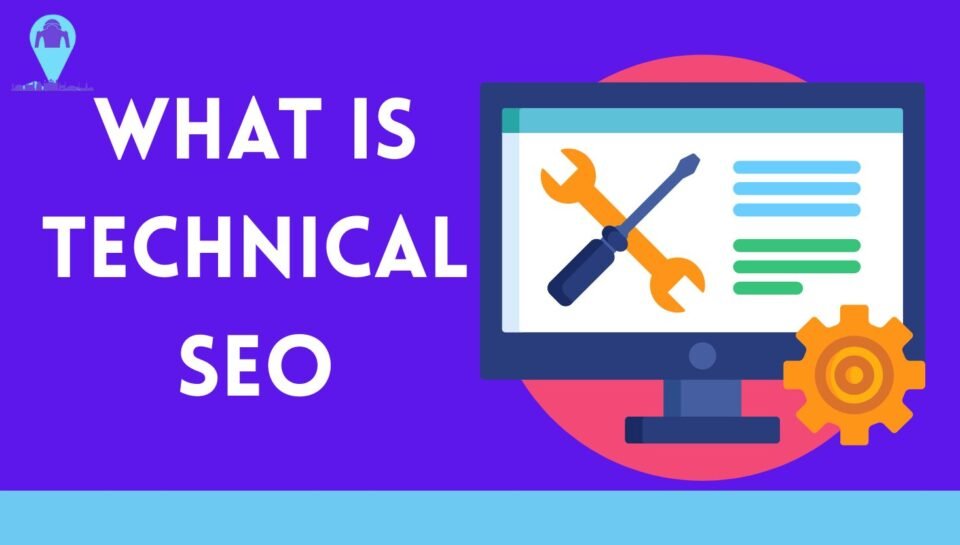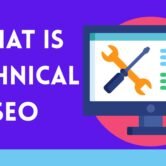
Technical SEO refers to the process of optimizing a website’s infrastructure to enhance its crawling, indexing, and overall performance in search engine results. Unlike content-focused SEO, which centers on keywords and content quality, technical SEO addresses the backend elements that influence how search engines interact with your site. Proper technical SEO ensures that search engines can efficiently crawl and index your website, leading to improved visibility and user experience. In this comprehensive guide, we will delve into the key components of technical SEO and provide actionable insights to help you optimize your website effectively.
Table of Contents
1.Introduction to What is Technical SEO
2.Importance of Technical SEO
3.Key Components of Technical SEO
- Crawlability
- Indexability
- Site Performance
- Mobile-Friendliness
- Structured Data
- Site Architecture
- Security
4.Tools for Technical SEO
5.Common Technical SEO Issues and How to Fix Them
6.Best Practices for Technical SEO
Technical SEO encompasses the strategies and practices aimed at improving a website’s technical aspects to enhance its search engine rankings. It involves optimizing elements such as site speed, mobile responsiveness, and structured data to ensure that search engines can crawl and index the site effectively. By addressing these technical factors, websites can achieve better visibility in search engine results pages (SERPs), leading to increased organic traffic and improved user experience.
2. Importance of Technical SEO
Implementing effective technical SEO is crucial for several reasons:
- Improved Crawling and Indexing: Ensures that search engine bots can easily discover and index your website’s content.
- Enhanced User Experience: Optimizes site speed and mobile responsiveness, leading to better user engagement.
- Higher Search Engine Rankings: Addresses technical issues that could negatively impact search engine rankings.
- Better Site Security: Implements security measures that protect user data and build trust with visitors.
3. Key Components of Technical SEO
Crawlability
Crawlability refers to a search engine’s ability to access and navigate your website’s pages. To enhance crawlability:
- Create and Submit an XML Sitemap: Helps search engines discover all your site’s pages.
- Optimize Robots.txt File: Directs search engine bots on which pages to crawl and which to avoid.
- Internal Linking: Ensures that all important pages are linked within your site, facilitating easier crawling.
Indexability
Indexability is the process of storing and ranking your website’s pages in search engine databases. To improve indexability:
- Use Canonical Tags: Prevents duplicate content issues by specifying the preferred version of a page.
- Meta Robots Tags: Controls whether search engines index a page and follow its links.
- Fix Crawl Errors: Regularly check for and resolve any crawl errors reported in tools like Google Search Console.
Site Performance
Site performance, particularly page speed, is a critical factor in both user experience and SEO rankings. To enhance site performance:
- Optimize Images: Compress images to reduce load times without compromising quality.
- Minify CSS, JavaScript, and HTML: Removes unnecessary characters to speed up page rendering.
- Leverage Browser Caching: Stores static files in users’ browsers to reduce load times on subsequent visits.
Mobile-Friendliness
With the majority of searches now conducted on mobile devices, ensuring your site is mobile-friendly is essential. To improve mobile usability:
- Responsive Design: Ensures your site adapts to various screen sizes.
- Touch-Friendly Navigation: Makes it easy for users to interact with your site on mobile devices.
- Avoid Intrusive Interstitials: Prevents pop-ups that can hinder user experience on mobile.
Structured Data
Structured data helps search engines understand the context of your content, leading to enhanced search results. To implement structured data:
- Use Schema Markup: Adds context to your content, enabling rich snippets in search results.
- Validate Structured Data: Use tools like Google’s Structured Data Testing Tool to ensure correct implementation.
- Monitor for Errors: Regularly check for and fix any issues with your structured data.
Site Architecture
A well-organized site architecture improves both user experience and SEO. To optimize site architecture:
- Clear URL Structure: Uses descriptive URLs that reflect the content hierarchy.
- Breadcrumb Navigation: Helps users and search engines understand the site’s structure.
- Flat Site Architecture: Reduces the number of clicks needed to reach important pages.
Security
Website security is a ranking factor and builds trust with users. To enhance security:
- Implement HTTPS: Encrypts data between users and your site, protecting sensitive information.
- Regular Software Updates: Keeps your site secure by patching vulnerabilities.
- Use Secure Passwords: Protects your site from unauthorized access.
4. Tools for Technical SEO
Several tools can assist in implementing and monitoring technical SEO:
- Google Search Console: Provides insights into how Google crawls and indexes your site.
- Google PageSpeed Insights: Analyzes page speed and provides suggestions for improvement.
- Screaming Frog SEO Spider: Crawls your website to identify technical SEO issues.
- Ahrefs: Offers tools for backlink analysis, keyword research, and site audits.
- GTmetrix: Provides detailed reports on page speed and performance.
5. Common Technical SEO Issues and How to Fix Them
Some common technical SEO issues include:
- Slow Page Load Times: Addressed by optimizing images, minifying code, and leveraging browser caching.
- Duplicate Content: Resolved by using canonical tags and 301 redirects.
- Broken Links: Fixed by regularly checking for and repairing broken internal and external links.
- Mobile Usability Issues: Corrected by implementing responsive design and optimizing mobile navigation.
6. Best Practices for Technical SEO
To ensure effective technical SEO:
- Regular Audits: Conduct regular technical SEO audits to identify and resolve issues.
- Stay Updated: Keep abreast of changes in search engine algorithms and adjust your strategies accordingly.
- Prioritize User Experience: Always consider how technical changes affect user experience and make improvements where necessary.
- Collaborate with Developers: Work closely with web developers to implement technical SEO changes effectively.
Conclusion
Technical SEO is a vital component of any comprehensive SEO strategy. By focusing on the technical aspects of your website, you can improve its visibility in search engine results, enhance user experience, and ultimately drive more organic traffic. Regularly auditing your site, staying informed about SEO best practices, and collaborating with professionals will help you maintain a technically sound website that meets both user and search engine expectations.
FAQs:
1. What is the main difference between technical SEO and on-page SEO?
Technical SEO focuses on website structure and backend performance, while on-page SEO deals with content and keywords.
2. Why is technical SEO important?
It helps search engines crawl and index your site properly, which improves rankings and user experience.
3. How often should I perform a technical SEO audit?
A full audit is recommended every 3 to 6 months or after major site changes.
4. Can I do technical SEO on my own?
Yes, basic tasks can be done using tools, but complex issues may require expert help.
5. What tools are Best for technical SEO?
Popular tools include Google Search Console, Screaming Frog, GTmetrix, and PageSpeed Insights.






